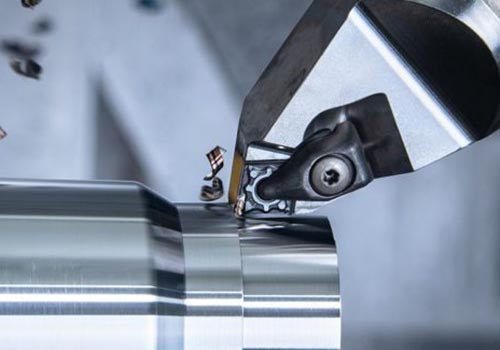
The Legacy of CNC Inserts: A Historical Overview
Share
Introduction
Computer Numerical Control (CNC) machines have revolutionized the manufacturing industry. These machines have made it possible to produce complex parts with high precision and accuracy. One key component of CNC machines is the CNC insert. In this blog post, we will take a historical journey of the CNC insert, tracing its evolution from its inception to its current state.
The Birth of the CNC Insert
The history of the CNC insert dates back to the 1940s when the first machine tools were developed. These early machine tools used single-point cutting tools, which were made from high-speed steel. These tools were effective, but they had a short lifespan and required frequent sharpening. In the 1950s, carbide tools were introduced, which had a longer lifespan and could operate at higher cutting speeds. However, these tools were expensive and required specialized grinding machines to manufacture.
In the 1960s, the first indexable insert was developed. This insert was made from carbide and had multiple cutting edges. It could be indexed to expose a fresh cutting edge when one became dull, increasing tool life and reducing the need for frequent sharpening. This was a significant breakthrough, and it laid the foundation for the development of modern CNC inserts.
The Evolution of the CNC Insert
Throughout the 1970s and 1980s, the development of CNC machines accelerated, and with it, the development of CNC inserts. Manufacturers began experimenting with different materials, coatings, and geometries to improve tool life, cutting speeds, and surface finish. One key development was the introduction of ceramics as a cutting tool material. Ceramics are extremely hard and can withstand high cutting temperatures, making them ideal for high-speed machining applications.
Another significant development was the introduction of coatings to the insert surface. These coatings could reduce friction, increase tool life, and improve surface finish. The first coating to be introduced was titanium nitride (TiN), which was followed by other coatings such as titanium carbonitride (TiCN) and aluminum oxide (Al2O3).
In the 1990s and 2000s, manufacturers continued to refine the design of CNC inserts, focusing on improving chip control, reducing vibration, and increasing cutting speeds. One key development was the introduction of wiper inserts, which have a unique geometry that produces a smoother surface finish and reduces the need for secondary operations.
The State of the Art CNC Insert
Today, CNC inserts are highly advanced and can be customized to meet specific machining requirements. Inserts are available in a wide range of sizes, geometries, and coatings, making it possible to machine a variety of materials with high precision and accuracy.
One of the most significant recent developments in CNC inserts is the introduction of 3D printing. 3D printing allows manufacturers to produce highly complex inserts with intricate geometries that would be impossible to achieve using traditional machining methods. This has opened up new possibilities in the machining of complex parts, particularly in the aerospace and medical industries.
Conclusion
The CNC insert has come a long way since its inception in the 1960s. It has evolved from a simple carbide insert with multiple cutting edges to a highly advanced tool that can be customized to meet specific machining requirements. The future of CNC inserts looks bright, with new developments such as 3D printing opening up new possibilities for the machining of complex parts. As CNC machines continue to advance, so too will the CNC insert, ensuring that the manufacturing industry remains at the forefront of innovation and technology.




